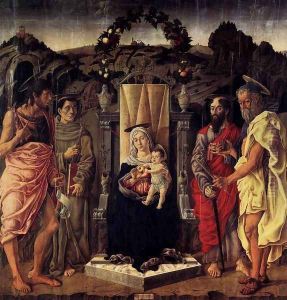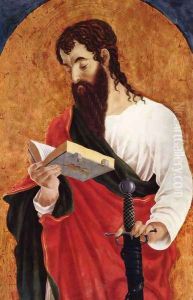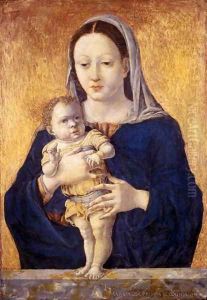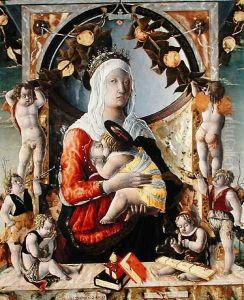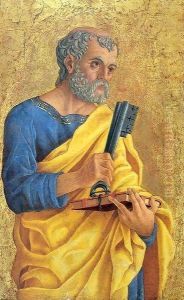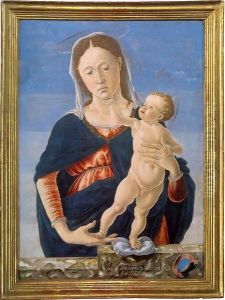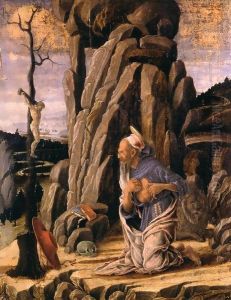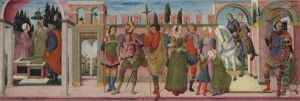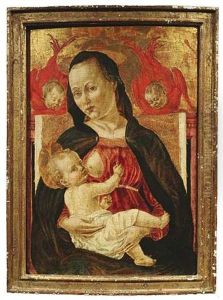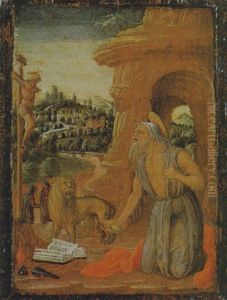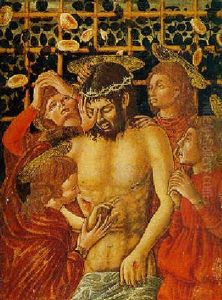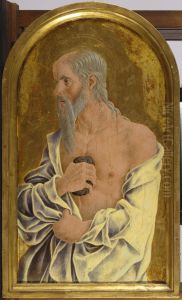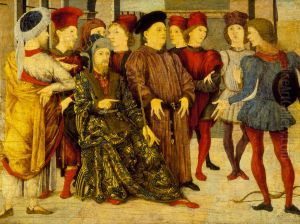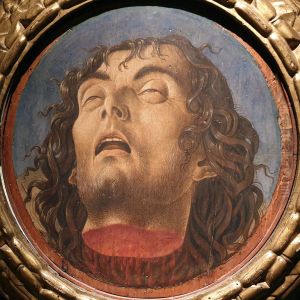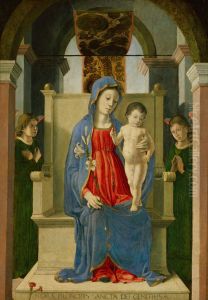Marco Zoppo Paintings
Marco Zoppo was an Italian painter of the Renaissance period, born in Cento, a small town in the Emilia region, in 1433. He was initially attributed to the Venetian school of painting, as he was thought to have been a pupil of the painter Squarcione in Padua. However, later research suggests that he may have been a student of Lippo Dalmasio in Bologna, where he spent the majority of his early artistic career.
Zoppo's work is characterized by its vibrant color palette and the incorporation of classical and architectural elements, typical of the Renaissance style. He was particularly known for his religious paintings, altarpieces, and manuscript illuminations. One of his notable works is the San Petronio Altarpiece, which demonstrates his skill in composition and his ability to convey narrative through art.
Throughout his career, Zoppo traveled extensively across Italy, which influenced the development of his style. He spent time in Venice, where he was exposed to the works of other Renaissance masters, and later moved to Pesaro. In Pesaro, he worked under the patronage of Costanzo Sforza and was involved in the decoration of the local library, among other commissions.
Despite being less well-known than some of his contemporaries, Zoppo contributed to the spread of Renaissance ideals through his art and teachings. He is also noted for his role as a mentor to young artists, bridging the gap between the older generation of painters and the new wave of Renaissance artists.
Marco Zoppo passed away in 1498 in Venice, leaving behind a legacy that reflects the transitional phase of Italian art from the Gothic style to the more humanistic and naturalistic approach that defines the Renaissance. His works are preserved in various museums and collections, offering insight into the artistic developments of the 15th century.
